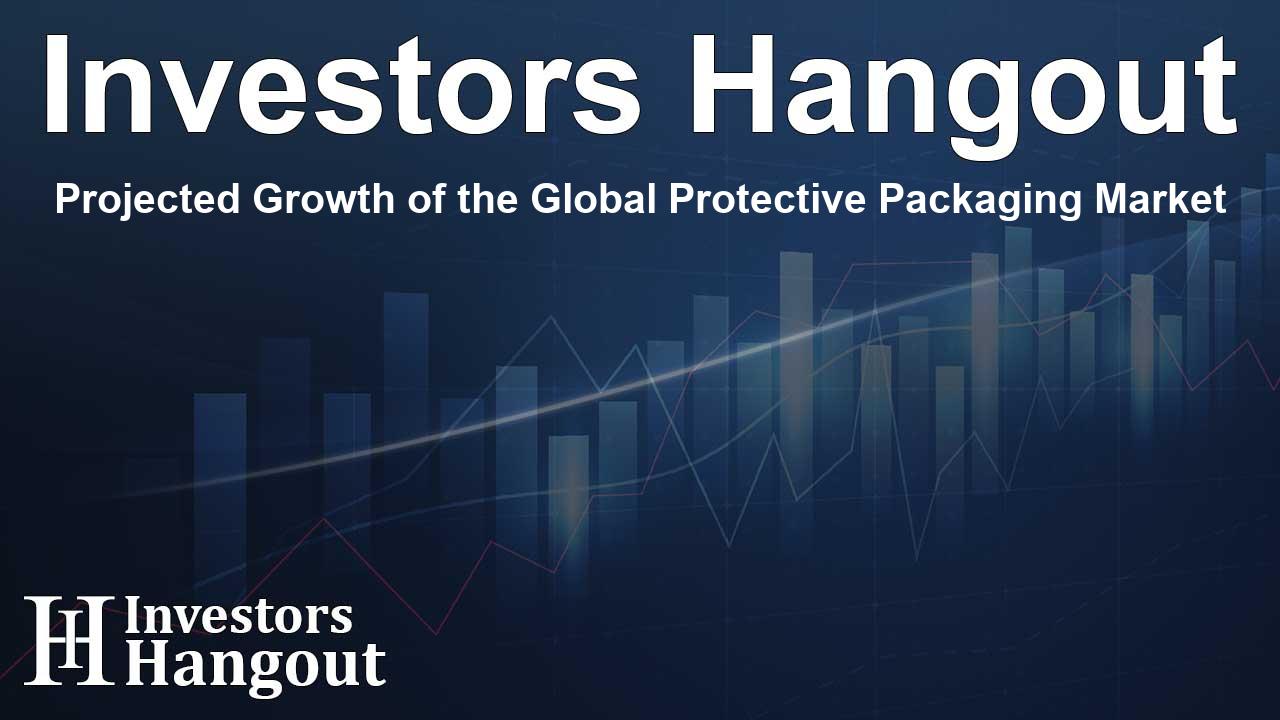Projected Growth of the Global Protective Packaging Market

Overview of the Protective Packaging Market
The global protective packaging market is experiencing significant growth, projected to elevate from USD 30.90 billion in 2023 to approximately USD 48.54 billion by 2033. This growth trajectory reflects a compound annual growth rate (CAGR) of 4.7% over a decade. Protective packaging is essential in the broad packaging industry, serving crucial roles during product storage, shipment, and delivery.
Impact of E-commerce on Protective Packaging
Growth Due to Online Shopping
The surge in e-commerce is a primary catalyst for the expansion of protective packaging. With a rise in online purchases, brand owners are increasingly recognizing the need for robust packaging solutions that ensure product integrity through transit. This trend is likely to endure as consumers favor shopping online across various sectors.
Technological Innovations in the Market
Advancements in Packaging Technology
Technological advancements are reshaping the protective packaging landscape. Innovations such as smart packaging—integrating sensors and monitoring technologies—are becoming more prevalent. These innovations not only enhance packaging performance but also provide businesses crucial data insights for enhancing customer experiences.
Customization Trends in Protective Packaging
Aligning with Brand Identity
Customization and personalization in packaging are more important than ever. Brands are pursuing packaging solutions that protect products while also reflecting their unique identities. By focusing on aesthetics and functionality, companies that innovate in this space create memorable unboxing experiences that resonate with consumers.
Market Dynamics and Regional Insights
Regional Market Performance
In 2023, the Asia Pacific region held the largest market share at 34.72% of the protective packaging sector. The region's growth is largely driven by the booming e-commerce industry, growing disposable income, and increasing manufacturing activities. Rapid industrialization in countries like China and India, alongside a focus on sustainable packaging, is set to further enhance market dynamics.
North America: A Booming Market
Conversely, North America is anticipated to grow at a CAGR of 4.3%. This region benefits from mature industries including e-commerce and retail, which depend on effective protective packaging to maintain product safety throughout the supply chain. The presence of several leading packaging manufacturers fosters ongoing innovations and compliance with environmental regulations.
Key Segments of Protective Packaging
Material Segmentation
Materials utilized in protective packaging are diverse. In 2023, plastics captured the largest market share at 44.53%, owing to their lightweight and insulating properties. Other materials like paper and foam plastics are increasingly being adopted to cater to the growing consumer demand for eco-friendly packaging solutions.
Function Segmentation
In terms of functionality, the insulation segment led the market in 2023, holding 28.17% of the market share. Insulation packaging is vital for maintaining temperature control in products ranging from food and beverages to pharmaceuticals. Similarly, cushioning materials are experiencing more demand as they play critical roles in protecting fragile products.
Future Outlook for Protective Packaging
Sustainability and Environmental Initiatives
The protective packaging market is increasingly steered by sustainability initiatives. Companies are shifting towards eco-friendly materials to reduce their carbon footprint and cater to an environmentally-conscious consumer base. Emphasizing recyclable materials and innovative designs is helping brands position themselves favorably in the competitive market.
Innovative Growth Strategies
As the protective packaging industry transforms, market players are focusing on technological advancements to enhance product safety and customer engagement. Opportunities in smart packaging solutions are particularly appealing, as they not only improve safety but also open doors for greater customer interaction through interactive features.
Frequently Asked Questions
1. What is the expected growth rate of the protective packaging market?
The protective packaging market is projected to grow at a CAGR of 4.7% between 2024 and 2033.
2. Which region dominates the protective packaging market?
The Asia Pacific region dominates the protective packaging market, holding a significant market share due to rapid e-commerce growth.
3. What materials are primarily used in protective packaging?
Common materials include plastics, paper, and foam plastics, with plastics holding the largest market share.
4. How does e-commerce impact protective packaging demand?
The rise in e-commerce boosts demand for protective packaging solutions to ensure safe delivery and product integrity during transit.
5. What role does sustainability play in the protective packaging market?
Sustainability initiatives drive innovation in the market, leading companies to adopt eco-friendly materials and reduce environmental impact.
About Investors Hangout
Investors Hangout is a leading online stock forum for financial discussion and learning, offering a wide range of free tools and resources. It draws in traders of all levels, who exchange market knowledge, investigate trading tactics, and keep an eye on industry developments in real time. Featuring financial articles, stock message boards, quotes, charts, company profiles, and live news updates. Through cooperative learning and a wealth of informational resources, it helps users from novices creating their first portfolios to experts honing their techniques. Join Investors Hangout today: https://investorshangout.com/
Disclaimer: The content of this article is solely for general informational purposes only; it does not represent legal, financial, or investment advice. Investors Hangout does not offer financial advice; the author is not a licensed financial advisor. Consult a qualified advisor before making any financial or investment decisions based on this article. The author's interpretation of publicly available data shapes the opinions presented here; as a result, they should not be taken as advice to purchase, sell, or hold any securities mentioned or any other investments. The author does not guarantee the accuracy, completeness, or timeliness of any material, providing it "as is." Information and market conditions may change; past performance is not indicative of future outcomes. If any of the material offered here is inaccurate, please contact us for corrections.